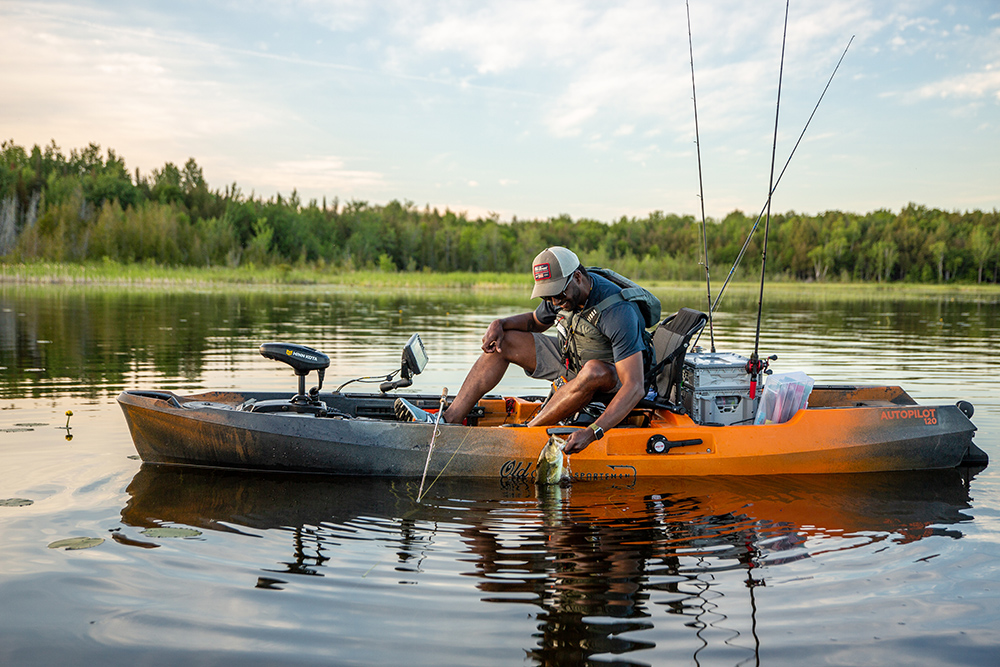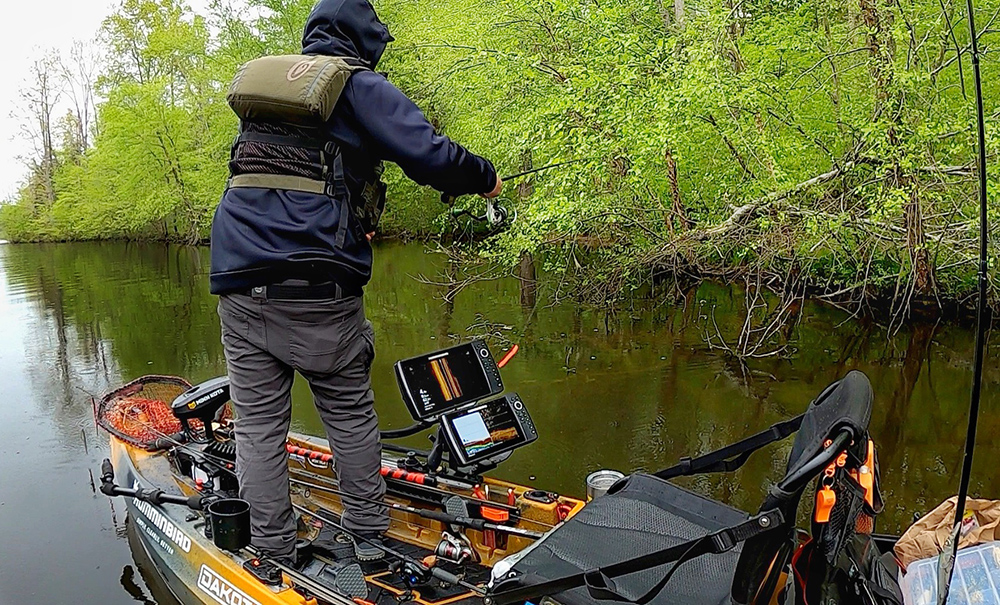Catching Largemouth Bass During The Spawn
By: Casey Reed
Largemouth bass will generally spawn anywhere from February, in the lower parts of Florida and Texas, till June in the most northern parts of the states. When they do this, they move from their pre-spawn habits into full blown spawn. The main spawn areas will be shallow areas of pockets, and the backs of creeks.
Once the water temperatures start to steadily reach the 60 degree mark, you'll likely see the "buck" bass move up and start to fan the area with their tails to remove any debris, and to create a circular depression which is the bed where the females will eventually deposit their eggs. In dirty water, bass will generally spawn a little shallower. The clearer the water, the deeper they will bed. As the water continues to warm, the bass will spawn deeper because the water will still be closer to the prime spawning temps.
The buck bass will be up for at least a couple days before you'll ever see the females. The bigger female bass are close by, staged just off the bed in deeper water. To catch these bigger females that haven't moved up on the bed, a buzzbait or a bigger texas rigged worm works great. If you find an area with a lot of bucks then fish just a little big deeper to find the big females.

When the males and females are both locked on the bed, the key is to move up on them quietly so as not to spook them and position your kayak so you can easily repeat a cast just past the bed. The fish can be spooked really easily depending on how long they have been locked on the bed. The further away you can stay the better but obviously the closer you are the easier it is for you to see your lure and watch the fish react to it, so you need to find that right distance for each fish. Once you're positioned correctly, you can make the cast just past the bed, and drag your bait into the bed. The first cast will tell you a lot. If the fish see the bait, and swim off, they will likely be a bit harder to catch. If the fish immediately notice the bait and nose down on it, that's a good sign that the fish can be caught fairly quickly. If you cast into the bed and they swim off really quickly, that probably means it is going to take a lot more effort to catch that fish, and then you may need to back up further away from the bed. The best way to catch those spooky fish is to continue to make repeated casts to the bed while they're in the area. They may swim away quickly or not pay any attention to your bait at first, but with repeated casts and even bumping the fish with your bait, will be just enough to get those fish to eat.
The key for me is to drag your bait close to the fish, and to pop the line and have your bait bump the fish on its side. The fish will usually do a circle, take a better look at the bait and maybe nose down on it. If the fish still hasn't taken the bait, next time pop the bait right in front of the fish as close as you can. The fish will often open its mouth and suck in the bait. Sometimes they'll grab it, swim off and quickly drop it outside of the bed area so make sure you're ready for a solid hookset. If you've already got the fish to eat once, even if you swing and miss or maybe you got a hook in the fish but it got off, that fish will likely return to the bed pretty quickly and will still be catchable. So be patient and start the process over again.

Each fish will react a little differently so you need to be patient and watch and learn as the fish reacts to your bait, and your movements. Once you catch a few fish, you'll really be able to learn to read the fish better, and gain confidence in this method. Just remember, it can take a lot of time, and you may have to leave and come back to a fish. Their moods can change quickly so have some patience and keep learning.
I've been fishing out of the Old Town Autopilot 136, and it is one heck of a platform for sight fishing. Being able to navigate the shallows while standing is a quick way to find a lot of big fish on beds. Once I've found a big fish, I slowly approach the area and deploy the shallow water anchor to keep me from getting any closer to the bed. I often have to use the motor to keep me pointed in the right direction since the wind can still blow you in circles with the anchor. You really have to be standing up to find and fish for bass on beds, and the stability of the Autopilot allows me to do just that. I can move up to the very front of the kayak to get a little closer, or I can stand on the seat to get a higher vantage point to see a little further.
When selecting baits, I tend to prefer a bright colored bait. White and pink are two great choices that can allow you to really see the bait easier so you can tell when the fish gets it in its mouth. I tend to use a shakeyhead jig and with a Zoom Trick Worm or finesse worm and I'll often shorten it a bit. Using a worm the fish can tend to pick it up by the tail and just drag it and drop it really quickly so you may want to use something with a smaller profile where the hook takes up most of the bait. That will help your hook up ratio because the fish is more likely to get the hook in its mouth even when it's quickly picking up and releasing the bait. A ⅛ oz texas rigged Missile D Bomb is a good choice for this, or any other creature bait will work as well. Another great option is a dropshot rigged with a Z-Man Finesse Shadz or other minnow/shad style bait.
Make sure you play around with the colors if the fish aren't biting, and you may just find a color that is working better. If you aren't having problems seeing the bait in the water, a bream or shad color pattern may work better.






